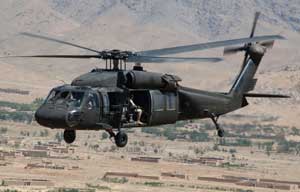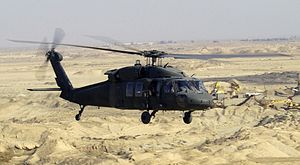UH 60 Parts: Recognizing the Influence On Trip Security
UH 60 Parts: Recognizing the Influence On Trip Security
Blog Article
Key Components of UH-60 Parts and Their Role in Helicopter Efficiency
The efficiency of the UH-60 helicopter is delicately linked to its key components, each playing a vital role in its overall capacities. Especially, the innovative blades system improves lift and maneuverability, while the avionics suite guarantees exceptional navigation and interaction. The powerplant, including the T700-GE-701C engine, supplies the necessary horsepower for numerous goals. Nonetheless, the characteristics of these elements prolong beyond simple functionality, impacting operational performance in real-world circumstances. Comprehending how each component engages can light up the underlying principles that make the UH-60 a reputable asset in varied environments. What exists underneath this integration?
Rotor System
At the heart of the UH-60 helicopter's efficiency lies its blades system, an elaborate setting up made for ideal lift and ability to move. The rotor system includes a main rotor and a tail rotor, each engineered to meet the requiring needs of military and civilian aviation.
The main blades includes a four-blade setup, created from advanced composite materials that guarantee strength and lower weight. This design enhances the helicopter's lift capabilities, enabling it to operate efficiently in various settings and conditions - uh 60 parts. The rotor blades are also furnished with an one-of-a-kind airfoil style, enhancing aerodynamic performance and boosting overall efficiency
The tail rotor offers an important function in combating the torque generated by the major rotor. It utilizes a two-blade design that supplies security and control during flight. The tail rotor's design minimizes sound and vibration, contributing to an extra comfortable experience for crew and travelers alike.
In addition, the blades system incorporates advanced control devices, consisting of a completely articulated blades head that enables for accurate modifications during trip. This capacity makes sure dexterity and responsiveness, which are essential for objective success in dynamic functional scenarios.

Avionics Suite
The avionics suite of the UH-60 helicopter represents a sophisticated integration of digital systems that improve navigating, communication, and trip monitoring. This suite includes innovative modern technologies such as the Gps (GPS), which gives accurate positioning data vital for goal planning and execution. The navigating system is additional complemented by inertial navigating systems (INS) that make certain trustworthy efficiency even in GPS-denied atmospheres.

Additionally, the trip management system (FMS) simplifies various flight operations by automating jobs such as path preparation, gas administration, and performance computations. This not only boosts operational efficiency yet also lowers pilot work, allowing them to concentrate on essential goal objectives.
Powerplant Elements
Integrating cutting-edge modern technology and engineering, the powerplant components of the UH-60 helicopter are vital for its performance and integrity. At the heart of the powerplant is the T700-GE-701C turboshaft engine, recognized for its phenomenal power-to-weight ratio and operational performance. This engine supplies 1,800 shaft horse power, making it possible for the UH-60 to do varied goals, from troop transportation to clinical emptying.
The powerplant system includes essential elements such as the gearbox, which assists in the conversion of engine power into rotor browse around this web-site drive, and the fuel system, guaranteeing optimum fuel delivery and monitoring. Additionally, the exhaust system plays a crucial role in warm dissipation and lowering infrared trademarks, improving the helicopter's survivability in battle circumstances.
Additionally, the powerplant's advanced control systems allow real-time surveillance of engine performance, enabling quick diagnostics and maintenance. This combination of modern technology improves operational readiness and dependability, making the UH-60 a formidable possession in different environments. The synergy between these powerplant elements not only takes full advantage of performance however additionally adds to the total goal success of the helicopter, highlighting its importance in modern-day armed forces procedures.
Fuselage Structure
Structure upon the robust powerplant system, the fuselage structure of the UH-60 helicopter plays a considerable role in its total functionality and goal abilities - uh 60 parts. The body acts as the main framework that houses critical parts such as avionics, gas systems, and team stations, making certain that these components are efficiently integrated for effective operation
Built mostly from aluminum alloys and composite materials, the fuselage is made to offer a light-weight yet resilient framework that can stand up to the stress and anxieties of trip and damaging environmental conditions. Its aerodynamic form reduces drag, adding to enhanced fuel performance and improved trip efficiency.
Furthermore, the body framework is furnished with features that improve survivability, consisting of energy-absorbing products and ballistic defense, which are crucial for missions in aggressive environments. The design of the fuselage also assists in rapid access to maintenance points, advertising functional preparedness and decreasing downtime.
Furthermore, the design permits modular setups, enabling the UH-60 to adjust to different mission profiles, from army transport to clinical emptying - uh 60 parts. Overall, the body structure is a vital part that straight influences the helicopter's convenience and efficiency in fulfilling varied operational demands

Landing Gear System
A critical part of the UH-60 helicopter, the landing gear system is made to supply stability and support during touchdown, ground, and launch operations. This system commonly contains a tricycle setup, including 2 main wheels found under the body and a tail wheel or skid, depending on the certain More Info variant.
Built from high-strength products, the touchdown equipment is engineered to take in considerable influence pressures during landings, making certain crew safety and keeping the structural honesty of the helicopter. The layout permits rapid release and retraction, facilitating effective ground handling and reducing drag throughout flight.
Furthermore, the touchdown gear system includes shock absorbers, which are essential for reducing vibrations and enhancing passenger comfort. These components are essential in maintaining optimal efficiency and security, specifically in harsh terrain or unfavorable weather.
Routine upkeep and examination of the touchdown equipment system are vital to guarantee its integrity and capability. Any kind of shortages can cause endangered security and operational effectiveness, emphasizing the relevance of this part in the general performance of the UH-60 helicopter.
Conclusion
To conclude, the UH-60 helicopter's efficiency is elaborately linked to its key parts, including the advanced blades system, advanced avionics suite, effective T700-GE-701C engine, light-weight fuselage structure, and durable touchdown gear. Each component plays a crucial function in enhancing lift, ability to move, navigation, and total functional effectiveness. The assimilation of these elements guarantees the UH-60's flexibility throughout diverse mission accounts and environments, strengthening its condition as a critical property in modern airborne operations.
Notably, the sophisticated rotor system boosts lift and maneuverability, while the avionics collection guarantees exceptional navigation and interaction.The avionics suite of the UH-60 helicopter stands for a sophisticated combination of electronic systems that improve navigating, flight, and interaction administration. The navigating system is additional enhanced by inertial navigation systems (INS) that make certain trusted performance even in GPS-denied settings.
Additionally, the powerplant's advanced control systems allow real-time monitoring of engine performance, enabling for fast diagnostics and upkeep.In conclusion, the UH-60 helicopter's performance is elaborately connected to its key elements, consisting of the innovative blades system, sophisticated my blog avionics suite, powerful T700-GE-701C engine, light-weight body framework, and durable landing equipment.
Report this page